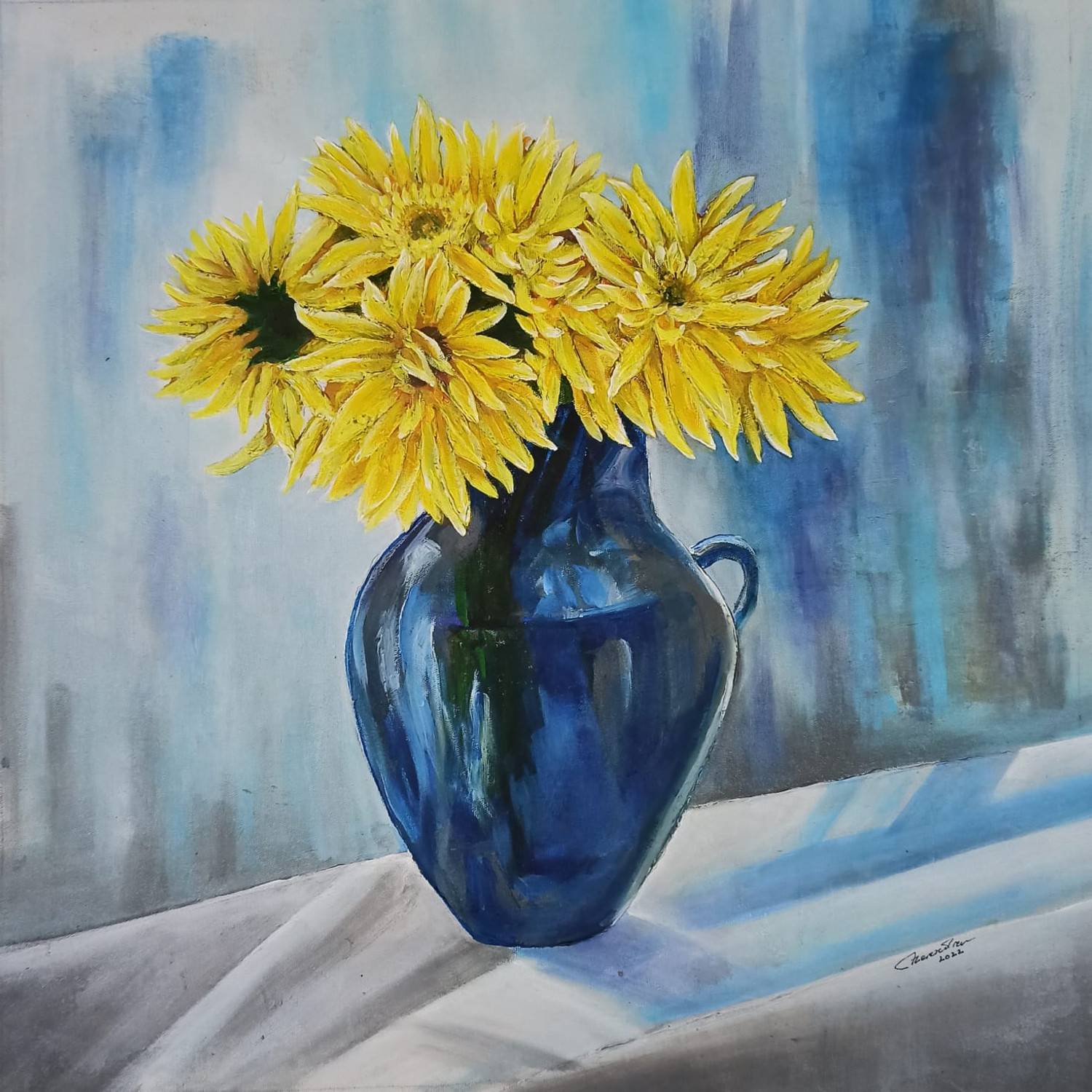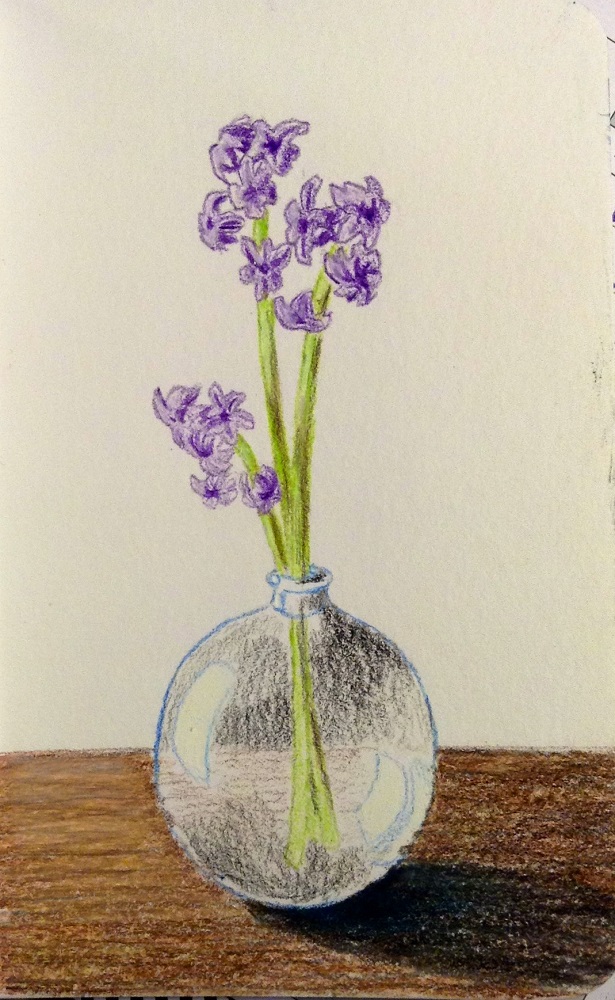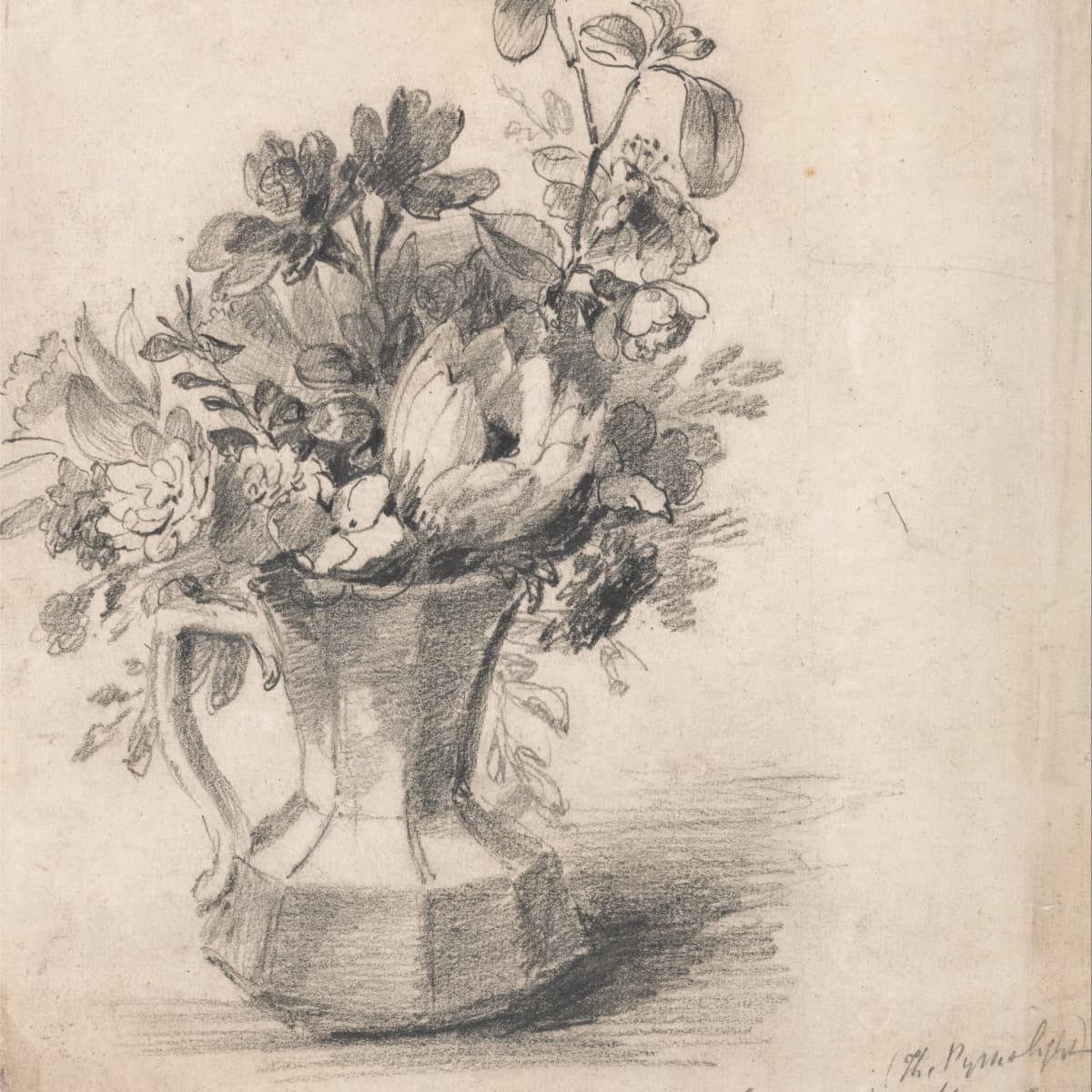
In the realm of artistic expression, still life drawings hold a special place, offering a captivating opportunity to capture the essence of everyday objects. Among the diverse subjects that grace still life compositions, a vase of flowers stands out as a timeless favorite, captivating artists of all skill levels. Embarking on a journey to draw a vase of flowers presents a delightful blend of aesthetic appeal and artistic challenge, allowing artists to explore the intricacies of form, light, and composition.
Gathering the Essentials for Artistic Creation
Before embarking on the creative endeavor of drawing a vase of flowers, it is essential to assemble the necessary tools and materials. A sturdy drawing board provides a stable surface for the drawing paper, while a range of pencils, from light to dark grades, offers the versatility to capture subtle variations in tone. An eraser stands ready to correct any missteps, ensuring a clean and refined final drawing.
For those seeking to enhance their artistic expression, additional materials can elevate the drawing experience. Charcoal or graphite sticks introduce a broader range of marks, while colored pencils or pens infuse the drawing with vibrant hues. Blending tools, such as tortillons or stumps, seamlessly smooth transitions between tones, creating a sense of depth and dimension. Finally, fixative safeguards the completed drawing, preserving its beauty for years to come.
Selecting the Perfect Vase and Flowers
The choice of a vase and flowers sets the stage for the artistic narrative, influencing the overall mood and aesthetic of the drawing. A vase, with its diverse shapes, sizes, and materials, presents a captivating subject in itself. Consider the simplicity or complexity of the vase design, ensuring it complements the composition without overpowering it. Stability is paramount, as the vase will serve as the foundation for the floral arrangement.
Freshly cut flowers, brimming with color, shape, and texture, provide the artistic inspiration. Opt for a variety of blooms, each with unique characteristics, to create a visually engaging composition. Consider the longevity of the flowers, ensuring they remain vibrant throughout the drawing process. Arrange the flowers harmoniously within the vase, creating a balanced and visually appealing ensemble.
Setting the Stage for Artistic Expression
With the vase and flowers carefully selected, the artist turns their attention to composing the scene. Positioning the vase and flowers is crucial, establishing the perspective and angle of the drawing. Ensure the vase is stable and the flowers are securely arranged, preventing any unwanted disruptions during the drawing process. Leave ample space around the vase and flowers, allowing for negative space that contributes to the overall composition.
Lighting plays a pivotal role in shaping the mood and dimension of the drawing. Whether utilizing natural or artificial light, observe how it interacts with the vase, flowers, and background. Shadows and highlights, judiciously applied, add depth and dimension, bringing the composition to life.
Establishing Basic Proportions: The Foundation of the Drawing
With the scene set, the artist embarks on capturing the essence of the vase and flowers, beginning with a light sketch of the overall outlines. Using loose, gestural strokes, focus on capturing the general shapes and proportions of the subjects. Avoid getting bogged down in details at this stage; the goal is to establish the foundation upon which the drawing will be built.
Refining the Sketch: Bringing the Composition to Life
As the artist progresses, the initial sketch evolves into a more refined representation of the vase and flowers. Gradually transition to darker pencils, defining shapes and adding details with precision. Pay close attention to the contours of the vase and flowers, ensuring they are accurately depicted. Utilize light and shadow to create a sense of depth and dimension, bringing the subjects to life on the paper.
Incorporating Shading and Texture: Enhancing Realism
Shading and texture play a crucial role in imbuing the drawing with a sense of realism. Employ shading techniques to emphasize form and volume, creating a three-dimensional appearance. Consider the texture of the vase material, whether it’s the smooth surface of glass or the intricate patterns of ceramic. Capture the delicate textures of the flower petals, veins, and leaves, adding subtle variations in shading to enhance their natural beauty.
Adding Details and Finishing Touches: The Flourishes of Artistic Expression
With the vase and flowers taking shape, the artist turns their attention to the finer details that elevate the drawing. Enhance the vase by adding patterns, textures, or reflections, capturing the nuances of its material and design. Pay attention to the rim, base, and any decorative elements, ensuring they harmonize with the overall style of the drawing.
Bring the flowers to life by defining the petals, stems, and leaves with precision. Capture the delicate details of the flowers, such as veins, textures, and subtle color variations. Use shading and highlights to accentuate the beauty of the flowers, making them the focal point of the composition.
Creating a Background: Setting the Stage for the Still Life
The background plays a supporting role in a still life drawing, framing the central subjects and influencing the overall mood. The artist can choose a simple, textured background, adding subtle variations in tone to create depth. Alternatively, a more detailed background, featuring elements like a table or a window, can provide context and enhance the narrative. Ultimately, the type of background should complement the vase and flowers, creating a cohesive visual experience.
Rendering the Background:
Once the artist has chosen the style of the background, they can begin to establish its outline with light pencil strokes. Gradually add details and shading, creating a sense of depth and ensuring the background doesn’t overpower the vase and flowers.
Final Adjustments and Evaluation: A Critical Eye
As the drawing nears completion, the artist takes a step back to evaluate their work with a critical eye. This is the time to identify any areas that require further refinement, such as inconsistencies in shading or inaccurate proportions. Assess the balance, composition, and overall impact of the drawing, ensuring all elements work together harmoniously. Make any necessary adjustments to enhance the final result.
Signing and Dating the Drawing: A Touch of Ownership
Finally, with the drawing complete, the artist adds a personal touch by signing their name and the date. Consider adding a title or caption to further personalize the artwork and provide context for the viewer. Take a moment to reflect on the drawing process, the challenges overcome, and the satisfaction of bringing a still life to life.
Conclusion: A Journey of Artistic Exploration
Drawing a vase of flowers presents a captivating artistic journey, offering opportunities for creative exploration, skill development, and self-expression. By following these steps and embracing the artistic process, aspiring artists and seasoned drawers alike can create a beautiful and timeless still life artwork. So, gather your materials, select your favorite flowers, and embark on a creative adventure into the world of drawing a vase of flowers.

